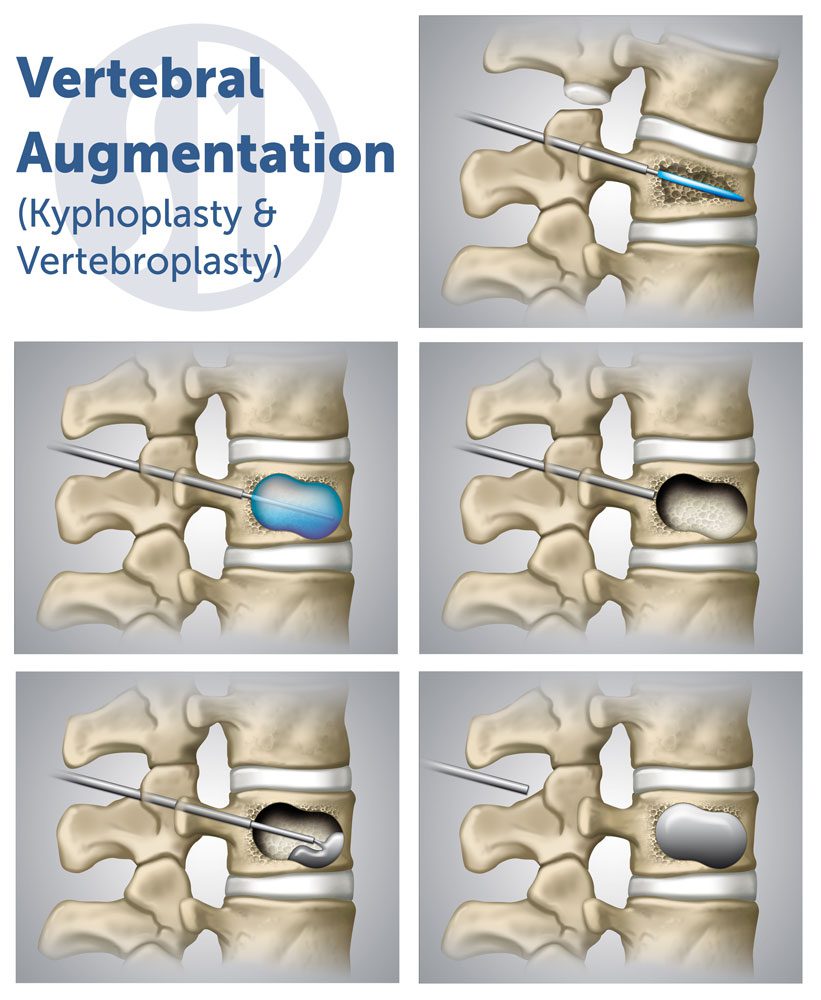Kyphoplasty & Vertebroplasty
Treatment Option for Patients with Spinal Compression Fractures
Vertebral Augmentation: Kyphoplasty and Vertebroplasty
Veterbral augmentation was developed in 1984 to reduce pain and loss of function from vertebral compression fractures. For people with advanced osteoporosis, a fracture can occur with extremely minor activity, such as sneezing, coughing, getting in or out of the bathtub, or simply turning over in bed. Prior to the invention of vertebral augmentation, patients suffering from compression fractures had only the option of bed rest until the bones healed and the pain subsided.
There are two types of vertebral augmentation – Vertebroplasty and Kyphoplasty. Your doctor will choose one of these two procedures to treat spinal fractures based on the details of your injury, your medical history, and the results of diagnostic imaging.
These minimally invasive procedures can provide rapid relief from the pain of these fractures, and patients undergoing these treatments are typically able to resume normal activity in the same day. These treatments offer effective and lasting relief from osteoporosis and spinal fractures, and also provide an alternative to open back surgery. Patients who follow a treatment plan including kyphoplasty or vertebroplasty report significant reduction of their pain and improvement of their range of motion and quality of life.
Consult a Physician About Kyphoplasty
Vertebroplasty
Vertebroplasty involves injecting a cement-like substance directly into the fractured vertebrae, which stabilizes the bone and can immediately decrease the pain resulting from the fracture. This procedure is percutaneous (minimally-invasive), requiring only a local anesthetic at the area of the needle insertion. The procedure normally takes an hour, and patients can return home on the same day.
Common Questions about Kyphoplasty & Vertebroplasty
Kyphoplasty
Kyphoplasty is functionally similar to vertebroplasty in that it stabilizes a fractured vertebrae to provide pain relief from compression fractures. The primary difference with Kyphoplasty is it involves a first step of inflating a small balloon (the KyphX Inflatable Bone Tamp) into the fractured area. The balloon expands the vertebrae to resume most of its original size and shape prior to the fracture. After space is created in the vertebrae, a cement-like substance is injected to fill the void and stabilize the bone.
This procedure is also minimally-invasive, requiring only a local anesthetic at the area of the needle insertion. The procedure normally takes an hour, and patients can return home on the same day.
